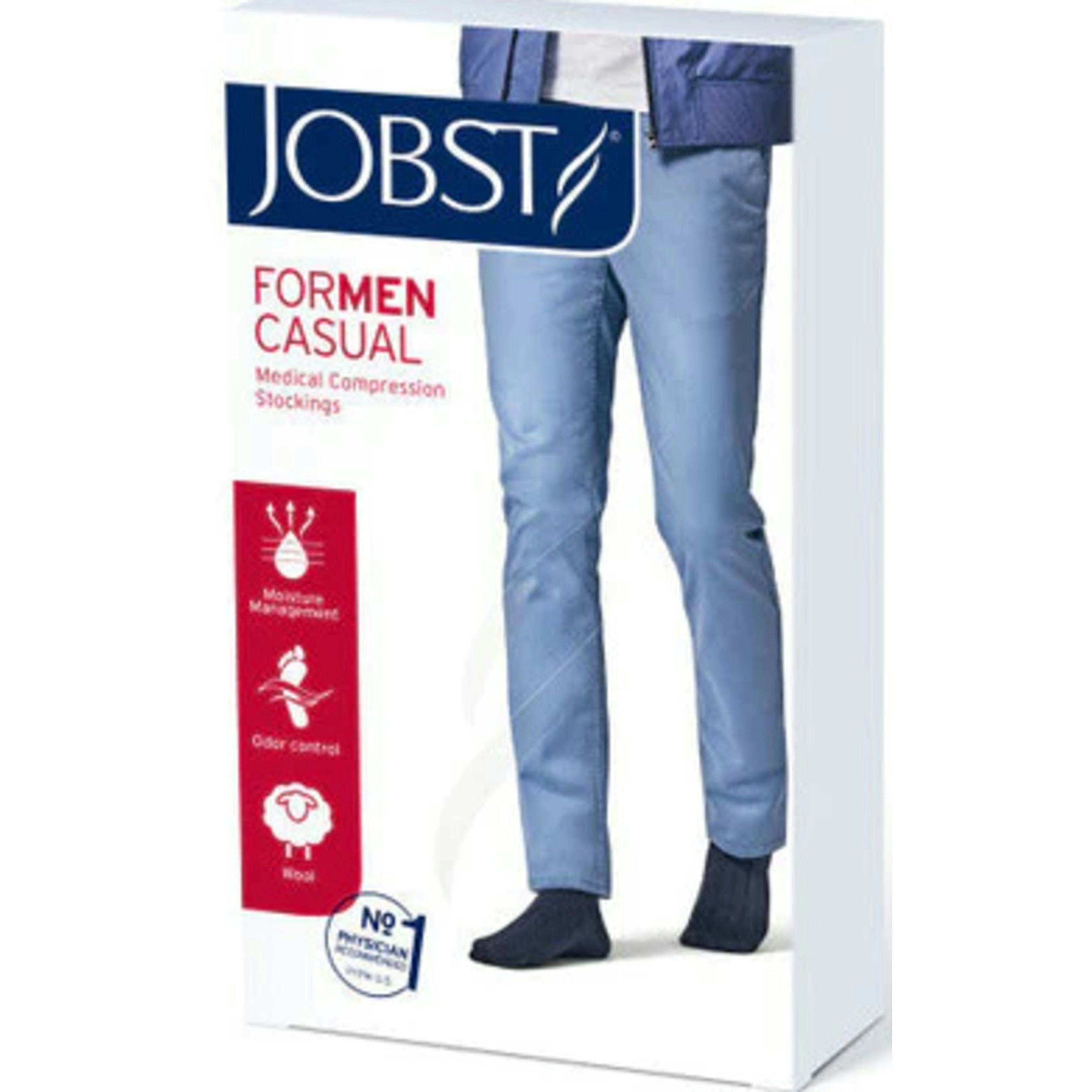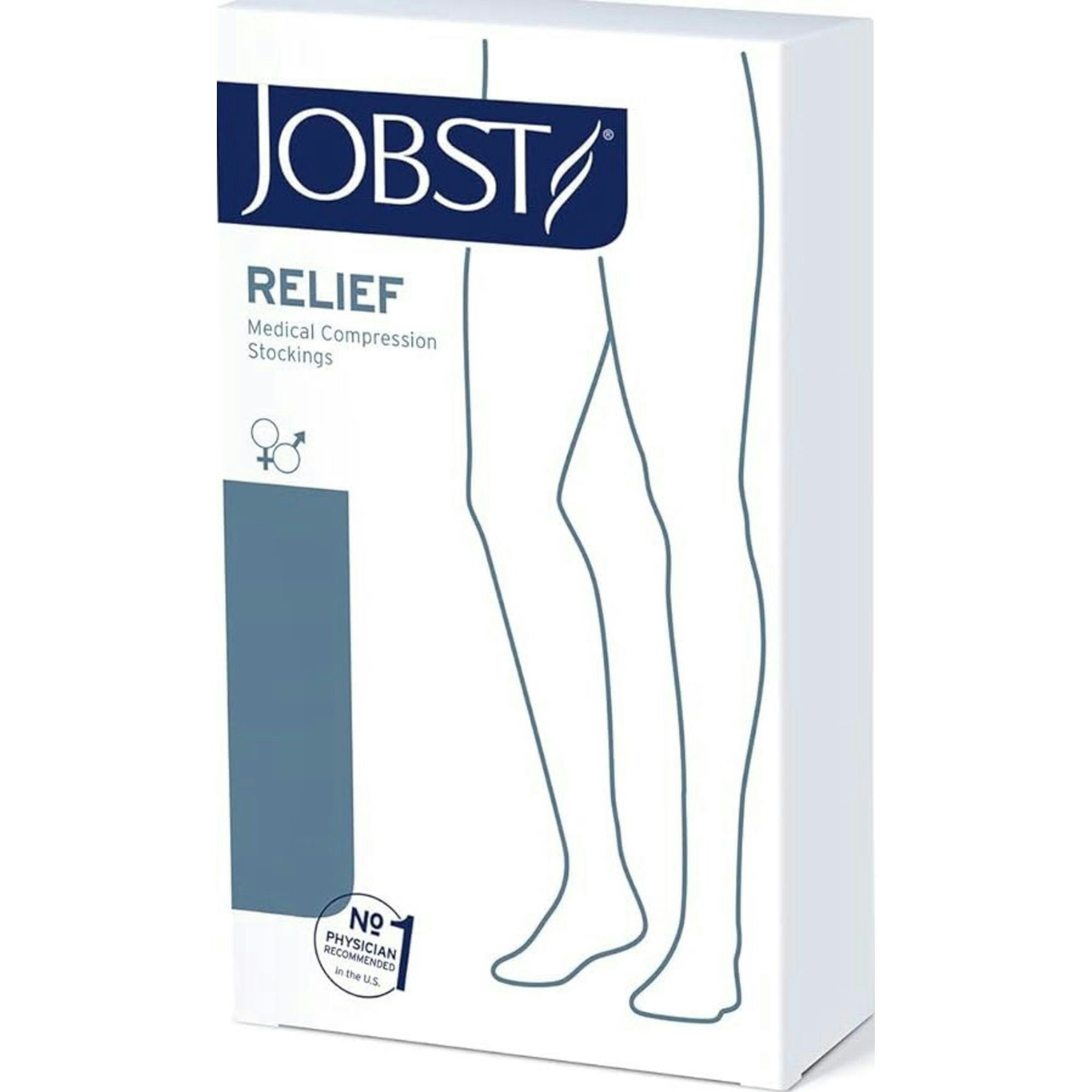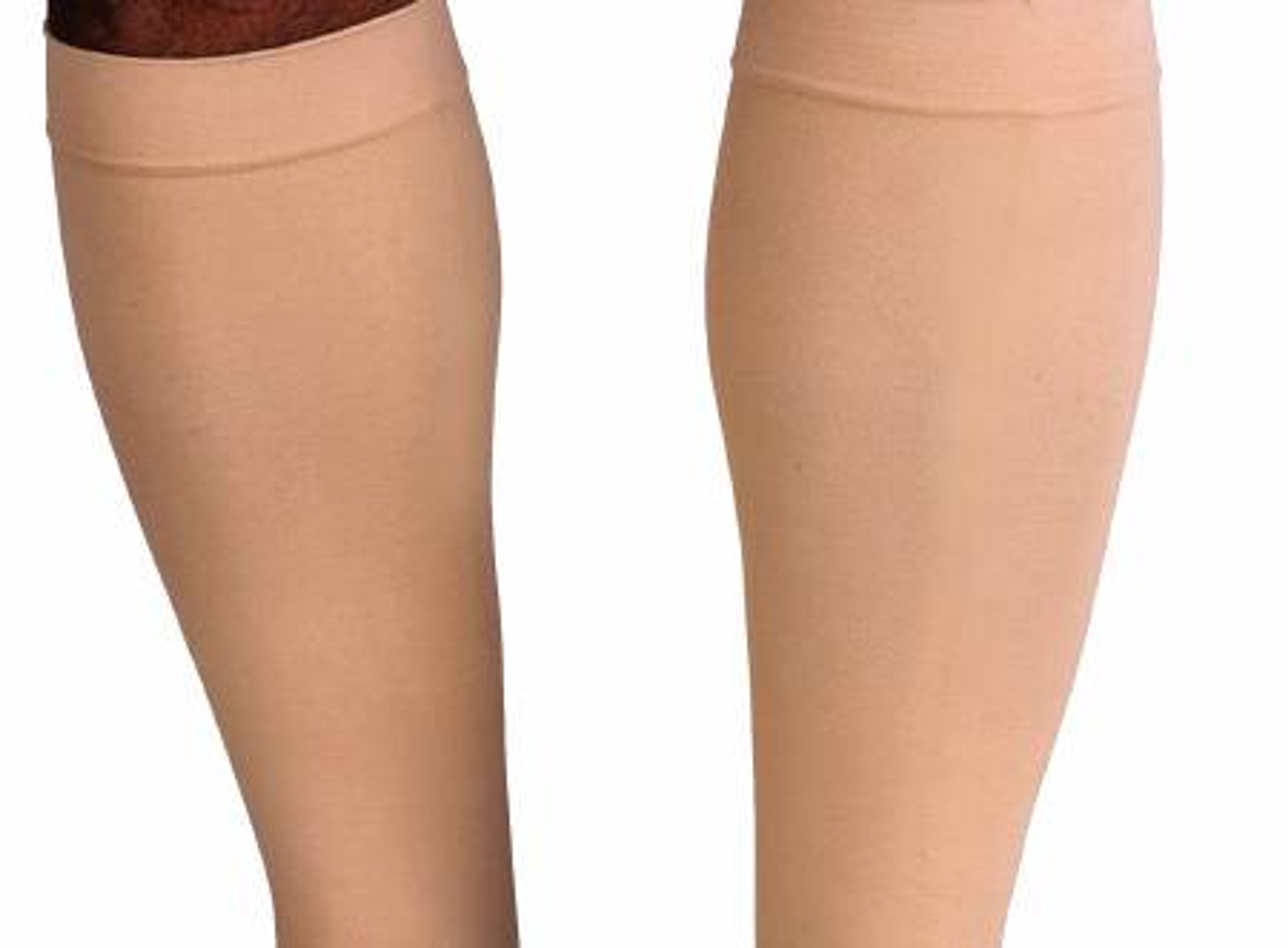About JOBST ForMen Knee High Open Toe Medical Compression Stockings, 20-30 mmHg
These knee-high compression socks combine comfort, style, and functionality. With a classic ribbed design and 30-40 mmHg graduated compression, they provide relief for moderate leg and vein symptoms while keeping you cool and confident throughout the day.
Key Benefits & Features
- 30-40 mmHg graduated compression for improved circulation and leg health
- Knee-high length for comfortable everyday wear
- Open-toe design for breathability
- Lightweight material for added comfort
- Classic ribbed design complements various styles
- Odor control formula for long-lasting freshness
- Wide comfort knee band for a secure fit
JOBST ForMen Knee High Open Toe Medical Compression Stockings, 20-30 mmHg FAQs
Can I wear one compression stocking on top of the other instead of wearing a higher compression stocking?
Yes, there is an additive effect with compression stockings. For example, some doctors instruct their patients to wear on level of compression in a pantyhose style and then wear a knee-length compression stocking over the compression pantyhose.
Should I wear stockings on the unaffected leg?
Only the leg with the symptoms or disease needs to wear the compression stocking. Some people prefer to wear compression on only the affected leg. Others may opt to wear the same brand of stocking but in a lower compression level on the unaffected or healthy leg. For example, your doctor may have told you to wear a 30-40 mmHg stocking for the chronic venous insufficiency present in one leg. You may choose to wear a 15-20 mmHg on the other leg.
Can I use lotions and creams with my compression stockings?
If the stocking is latex free, it is perfectly safe to use lotions or creams. In fact, it is especially important for people with lymphedema or venous insufficiency since daily skin care and moisturizer is so important. Applying lotion at night will make donning the stockings easier. If the stocking contains latex (some of the Jobst SupportWear), do not use lotions or creams. Heat, ultraviolet light, copper containing products, hydrocarbons and all petrolatum containing creams and ointments affect garments that contain natural rubber latex yarns.














